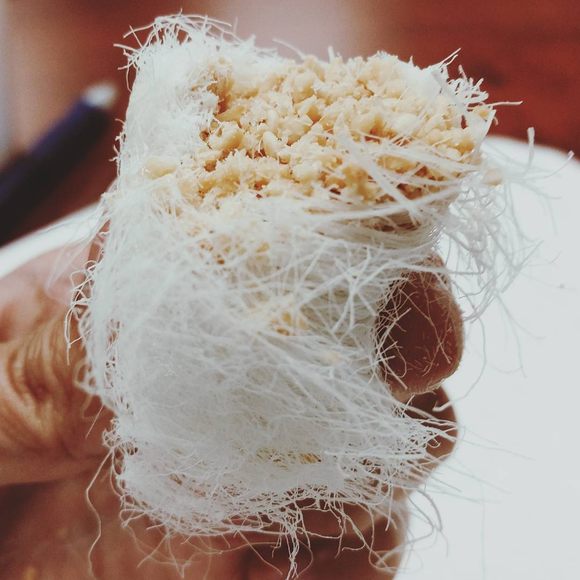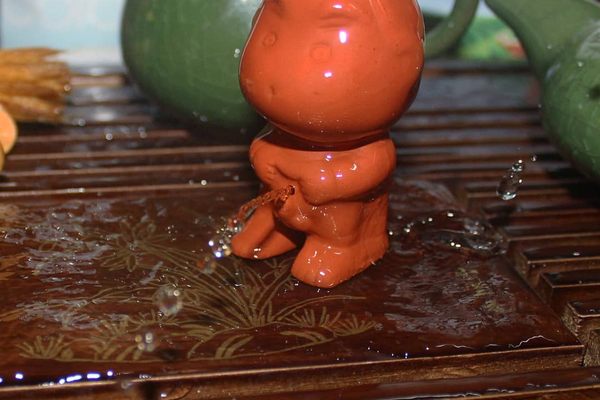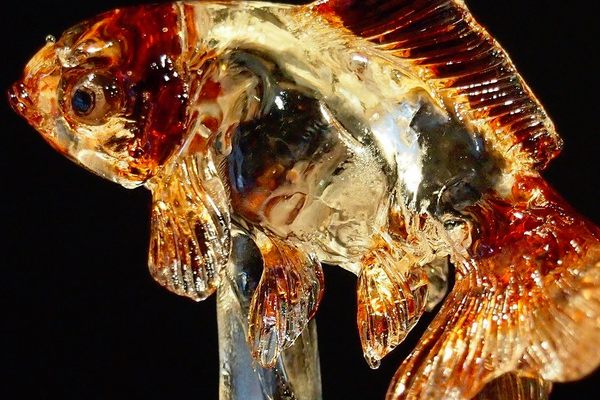Sweets
Dragon's Beard Candy
The ancient confection consists of wispy sugar-strands that look like dragon whiskers.
There are many legends surrounding the origin of dragon’s beard candy. The most popular story tells of a Han dynasty emperor. After eating hand-pulled sugar, the white wisps stuck to his face resembled the whiskers of a dragon. Another explanation is that the candy was simply named after the mythical creature, the symbol of the Chinese emperor, because it was so special and labor-intensive that only the royal court could enjoy it.
How did such a simple treat—its ingredient list consists of corn syrup and corn flour—rise to the ranks of royal dessert? The dish owes as much to its mesmerizing, theatrical preparation as to its sweet taste. After simmering and cooling the sweetener into a hard gel, confectioners shape it into a ring that they fold again and again into figure eights until they’ve separated it into thousands of fine hairs. The process requires great patience and care, as the slightest misstep can destroy the strands. Creators then wind the strings around a filling such as crushed peanuts, coconut, or sesame seeds to form a delicate nugget.
Thankfully, the confection that was once reserved for royalty can now be sampled on street corners throughout Asia and in Chinatowns around the world. Vendors add their own special touches, including entertaining narration and special effects. Roger Poon, a candy maker in Singapore, adds liquid nitrogen to create billows of smoke mimicking “dragon’s breath” that customers can blow out. (Warning: Health experts say eating liquid nitrogen might burn your throat and skin.)
Even though you might be distracted by your candy’s beauty, you must remember to eat it quickly. The ephemeral treat is very sensitive to temperature and moisture, so it could melt at a moment’s notice. Gobble it up with your hands and don’t forget to wipe away your dragon’s beard when you’re done.
Where to Try It
-
Bonbons à la Barbe de Dragon
1014 Rue Clark, Montréal, Québec, H2Z 1J9, CanadaA family-run hole-in-the-wall shop in Montreal's Chinatown. Cash only!
Written By
 Sam OBrien
Sam OBrien
Sources
- www.eater.com/video/2017/9/5/16254036/recipe-hand-pulled-cotton-candy
- books.google.com/books?id=XPNgBwAAQBAJ&pg=PT770&dq=%22dragon%27s+beard+candy%22&hl=en&sa=X&ved=0ahUKEwiF8LCr7KXYAhVhc98KHRdXA-Q4FBDoAQgxMAI#v=onepage&q=%22dragon's%20beard%20candy%22&f=false
- www.youtube.com/watch?v=OjRksAb0-74&feature=youtu.be
















